Osprey nesting success at Alameda Point
By Richard Bangert
Location, location, location! But for a fenced-off dilapidated navigation light stand on a jetty at the Seaplane Lagoon, Ospreys would not have had a successful nesting season at Alameda Point in 2016.
In late August, two adult Ospreys took flight from their Seaplane Lagoon perch for parts unknown with two healthy offspring. It was a welcome sight because for the past three years a series of frustrating avian soap operas featuring other Ospreys and unwanted nesting attempts aboard the maritime ship Admiral Callaghan were marked with failure. Previously in 2012 they had raised one chick, the only other recorded case of Osprey reproduction at Alameda Point.
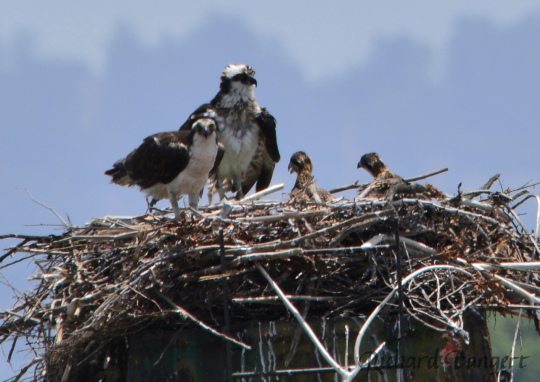
The Ospreys briefly attempted to nest this year on a parking lot light pole on the wharf near the USS Hornet. But a pair of ravens repeatedly harassed the Ospreys, even stealing nesting material and tossing some of it on the ground. The Ospreys finally found peace back on their original nest from years ago that still straddles the top of the light stand at the entrance to the Seaplane Lagoon. The navigation light stand, erected in 1940, is at the tip of the rock wall jetty on the west side of the lagoon.
This year’s nesting effort was aided by the installation of a fence across the foot of the jetty where the nest sits to keep curious individuals from wandering out near the nest and causing the birds to leave the nest. The fence was erected by the city at the urging of local osprey watchers.
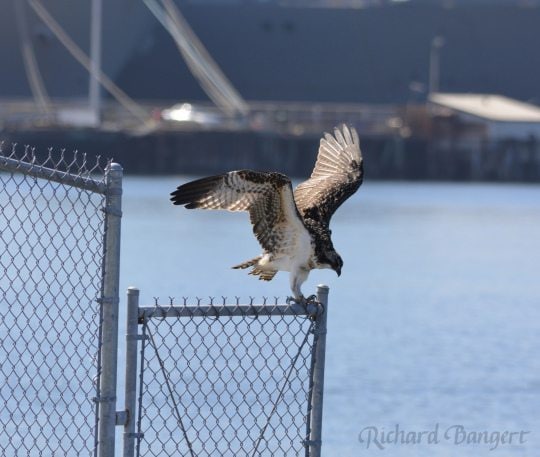
“Frequent disturbances can cause anxiety in wildlife that interrupts normal behavior,” said Leora Feeney, a longtime advocate for Alameda wildlife with Golden Gate Bird Alliance. “Having birds leave the nest, even for a few moments, provides an opportunity for gulls, ravens, herons, or others to prey on eggs or chicks.”
More help is needed in order to maintain this unusual raptor nest site. Three of the iron legs on the light stand are rusted through and won’t hold up the bulky Osprey nest much longer. Years ago its mate on the other side of the lagoon entrance toppled over and is hanging by a chain at water’s edge.
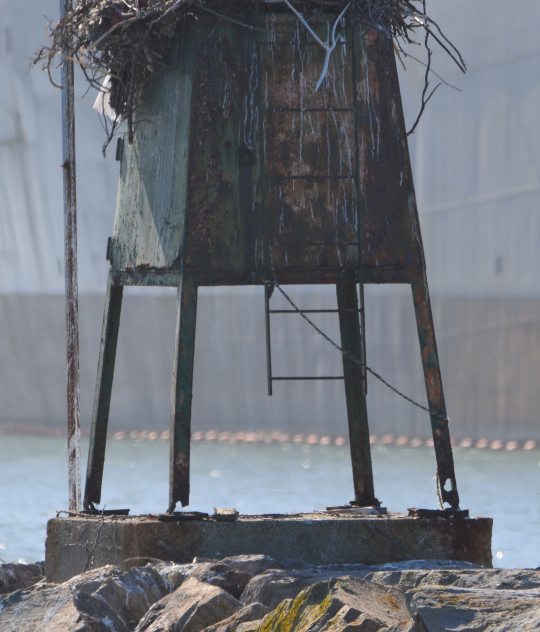
Help may be coming soon from the city. “We’re going to go out and inspect the nest structure and figure out how to secure/refurbish it so the Osprey can use it again and again,” said Nanette Mocanu, Assistant Community Development Director for the city. “They are impressive birds and we hope to keep them as permanent residents of Alameda Point.”
The Ospreys were first observed by Feeney settling into their nest on March 19. By May 18, the first chick had hatched. By May 28 the little heads of the chicks could be seen peering out over the edge of the nest for the first time. By mid-July the frequent wing exercises by the young Ospreys advanced to the first flight off the nest and around the Seaplane Lagoon.

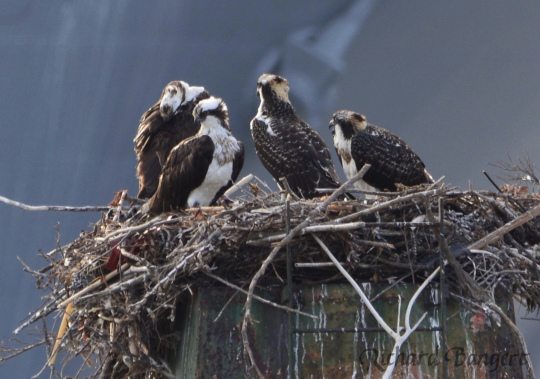
“The recent phenomenon of Ospreys nesting on San Francisco Bay began in 1990,” said Tony Brake, a volunteer with the Golden Gate Raptor Observatory, “with the rapid expansion beginning only after 2003. This may be due in part to the increased clarity of the Bay that provides easier fish foraging.”
Brake leads a team of volunteers, including Ralph Pericoli and Harv Wilson, who have been gathering data on Osprey nests around the Bay for GGRO. “The number of successful nests has almost doubled in four years of monitoring, and expansion southward continues,” said Brake. “This year there were 51 fledglings from 37 nests.” With few exceptions, the nests are all on human structures such as roofs, channel markers, light poles, special platforms on utility poles, and out-of-use cranes.
The monitoring effort has yet to employ satellite-tracking devices. “Osprey that have been tracked from British Columbia, Washington and Oregon have wintered in Mexico and Central America, but we have no idea where our local population goes,” said Brake.
“It is valuable for us to observe nature,” said Feeney. “Ospreys are particularly interesting to watch as they are large enough to see. Too often we forget that we share the planet with so many species that have lessons to teach,” said Feeney. “They can also alert us to hazards, entertain us, and become wonderful parts of our community. We should also appreciate that we don’t have to travel very far to witness their grandeur.”

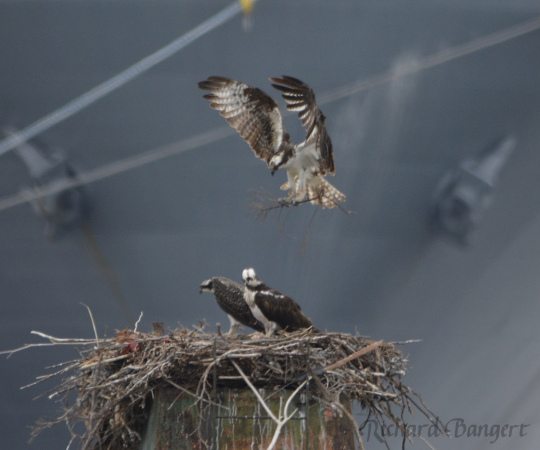
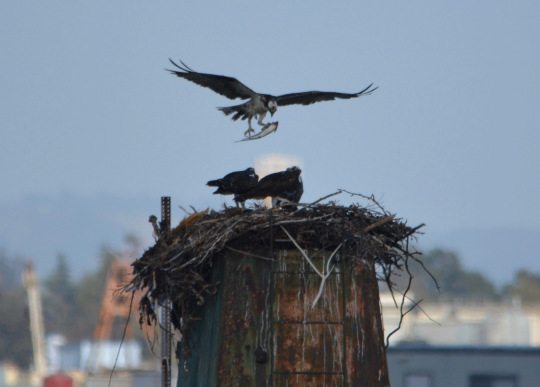
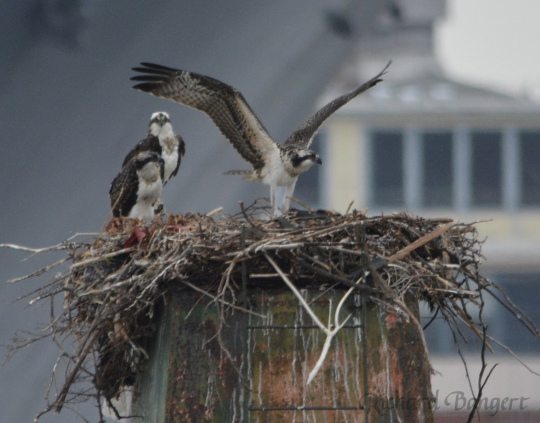
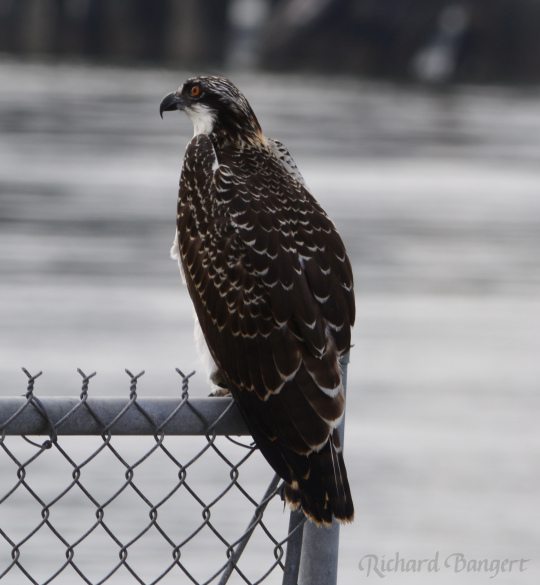
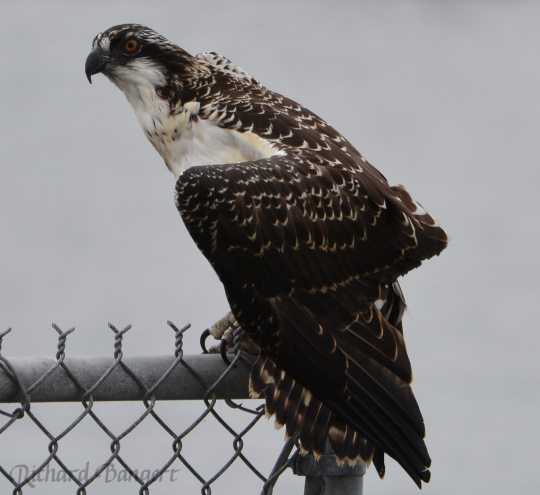
This article originally appeared in the Alameda Sun and on Richard Bangert’s excellent blog, Alameda Point Environmental Report. Visit his blog for some video footage of the Osprey nest. Or click here for a map showing all the documented S.F. Bay Osprey nests in 2016.
